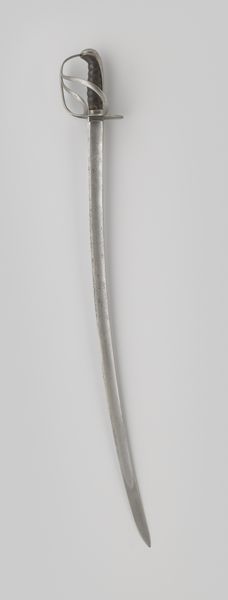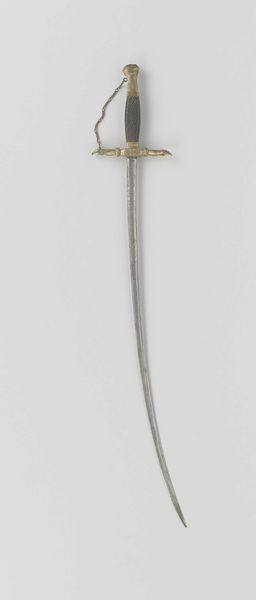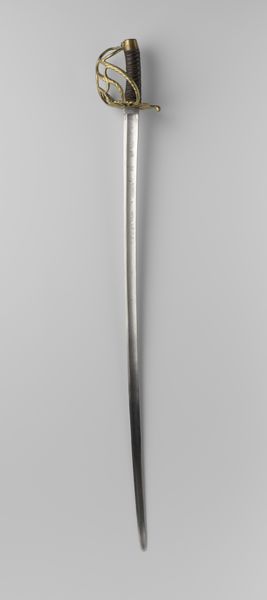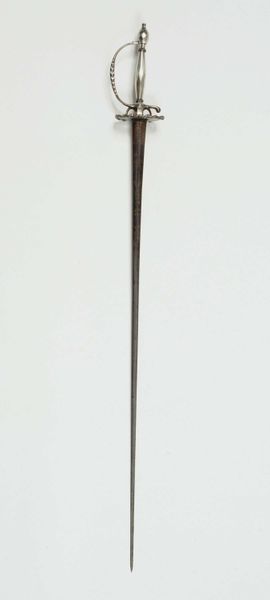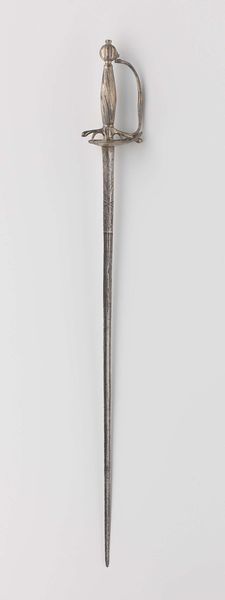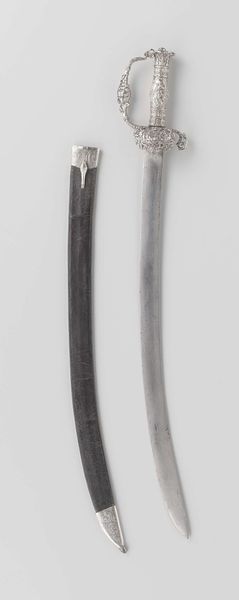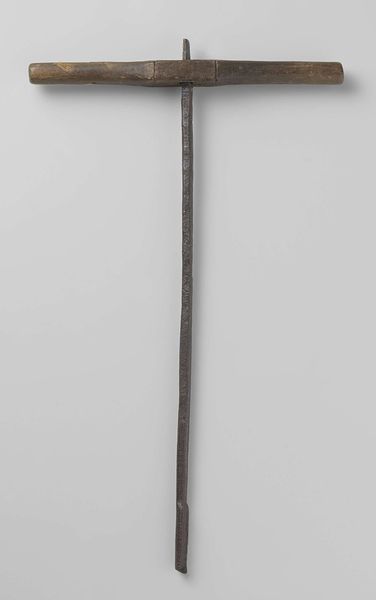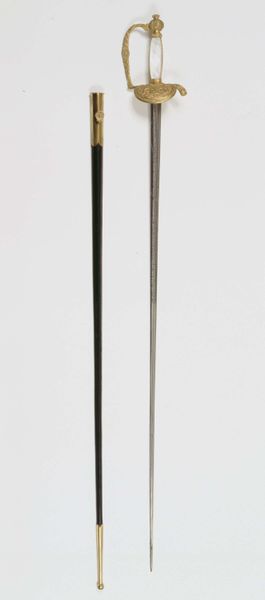
carving, metal
#
carving
#
metal
#
asian-art
#
japan
#
form
#
line
#
armor
#
sword
Dimensions: L. 36 1/8 in. (91.8 cm); L. of blade edge 29 9/16 in. (75.1 cm); D. of curvature 3/32 in. (2.4 cm)
Copyright: Public Domain
This katana blade was forged by Masazane in the early 16th century, a time of near-constant warfare in Japan. It is made from tamahagane steel, smelted in a labor-intensive process, and folded repeatedly to create its characteristic strength and subtle grain pattern. Look closely, and you’ll see the gentle curve called the sori, crucial for efficiently drawing the blade. The katana is more than just a weapon; it embodies the samurai’s code of honor, Bushido. The blade’s creation involved a complex division of labor, from miners and smelters to the swordsmith, each playing a crucial role in its making. Consider the hours of skilled work, the specialized tools, and the cultural significance imbued in every step. Understanding the material and processes behind this blade gives insight into its cultural and social importance, blurring the lines between weapon, artwork, and symbol.
Comments
No comments
Be the first to comment and join the conversation on the ultimate creative platform.
